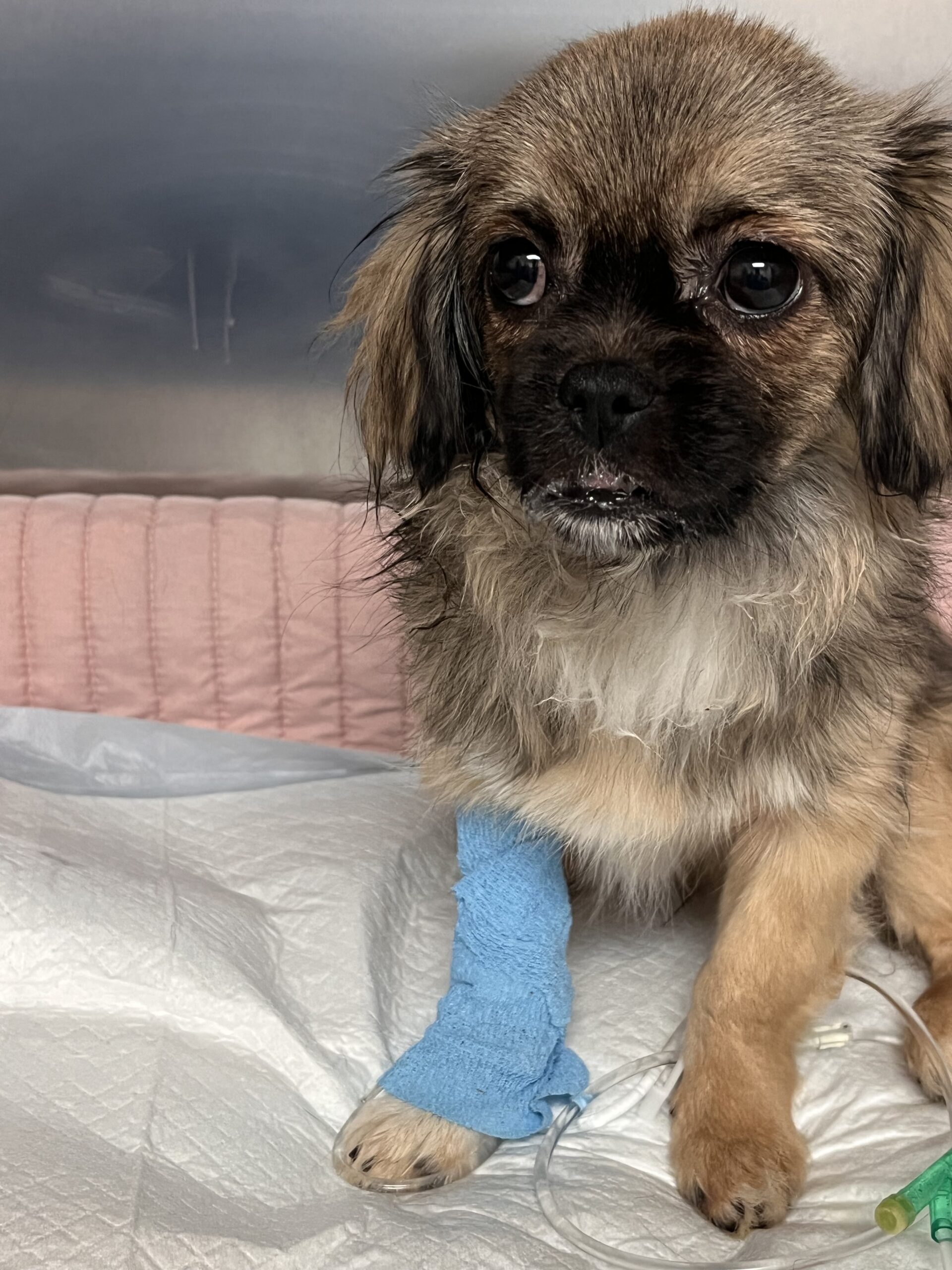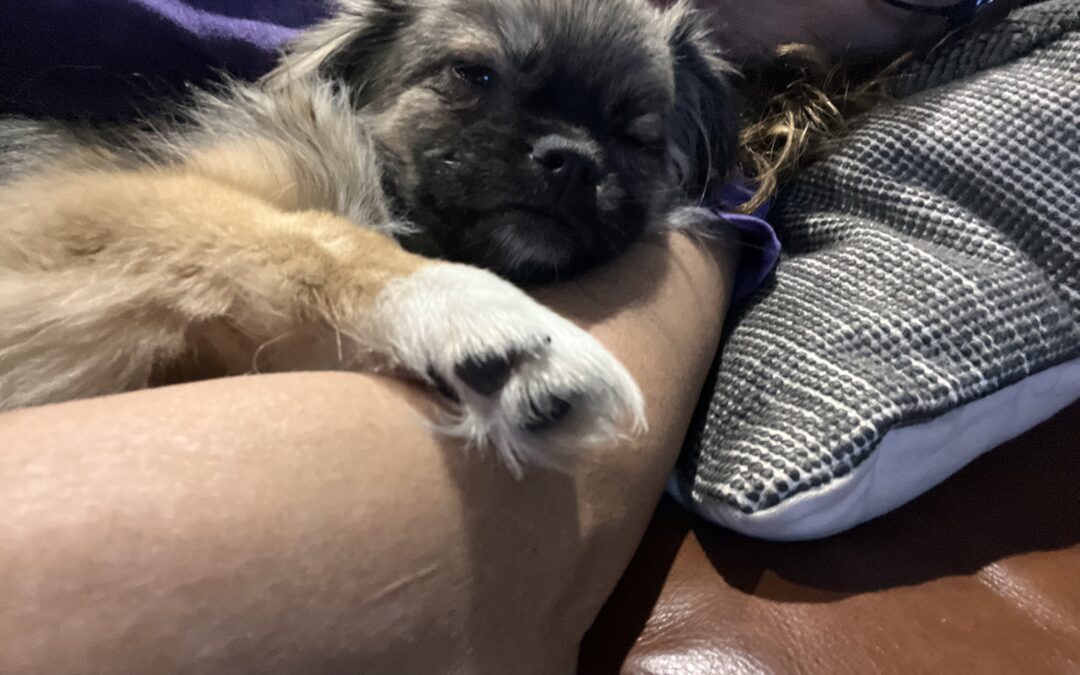I know. It’s a surprise to me, too.
Her name is Coco and she’s an adorable Tibetan spaniel.
Oh, and she has parvo.
Although it was apparent that Coco’s owners adored her, the puppy’s unexpected health decline brought them to an unfortunate crossroads—torn between good intentions and limited resources. After careful consideration, we determined that I would assume Coco’s ownership and care.
Cost of care challenges play out in veterinary clinics every day—in various forms, leading to different decisions, and resulting in mixed outcomes. So, how should we respond? How can we fulfill our duty to protect animal welfare and prevent suffering, and adequately care for our clients when the answer is “No”?
Consider the cost
First, we must recognize that while we often assume cost pertains to only the financial aspects of veterinary care, cost also includes time, emotions, the ability to physically provide care, and access to resources. In some cases, “I can’t afford it” is a blanket statement used to conceal other reasons and end the conversation—especially if the client fears they will be judged or shamed for their decision.
In Coco’s example, her family was concerned not only about the monetary expense of her treatment, but also the emotional cost of her potential passing. The family, which included two young boys, had only recently recovered from losing their beloved senior dog, and the parents feared losing Coco would be too much heartbreak for their sons.
Not every client will be as forthcoming about their personal “cost” concerns, and that’s OK—it’s not actually necessary to provide compassionate care. But, a thoughtful and compassionate approach is necessary.
Absorbing the “No”: Lead with compassion and empathy
Our natural reaction to “No” can range from disappointment and defeat to frustration and defensiveness, which limit our ability to connect with our clients and provide patient care. Don’t see a declined treatment estimate or proposal as a closed door—see it as an invitation to better understanding.
Begin by normalizing the client’s situation with non-judgmental language. This is as simple as acknowledgment. Say, “I can tell this is difficult for you—and that’s expected,” or “Many pet owners struggle with these decisions. It’s OK if you’re unsure,” or “I know this feels like a lot. I would feel the same way.” Legitimizing the client’s dilemma by showing concern and naming the emotional challenge builds trust and your client likely will be more receptive to alternative treatment plans. If you feel you need more information before proceeding, ask the client open-ended questions to understand—not judge—and to help you provide suitable options. Questions may include:
- “I want to ensure I understand how to effectively help Maddie. Can you share your concerns about her diagnosis or treatment?”
- “What are your goals for Maddie?”
- “What else would you like me to know about Maddie or her home situation?”

Let go of the gold standard and embrace the possibilities
The gold standard may sometimes be ideal for treating a condition but, fortunately, it’s not the only way. Instead of perceiving alternatives as “less than,” a mindset that can lead to personal frustration for veterinarians and shame for the client, see these opportunities as the beauty and art of veterinary medicine. Finding creative solutions that merge informed, evidence-based medicine with the practical realities of patient and client—including personal values, beliefs, and resources—makes this field fascinating and fulfilling.
After Coco’s owners declined her hospitalized treatment, I presented them with the next tier of suitable care—an outpatient protocol involving at-home subcutaneous fluid therapy and supportive medications to address clinical signs. However, despite the significant financial savings, the potential of a steep emotional price tag if Coco didn’t survive remained. The conversation continued.
Finding the balance: Shared decision-making provides better outcomes
Working within the framework of your client’s perceived limitations may feel restrictive but, ultimately, you create more opportunities for care. When your client sees you as a partner and collaborator truly invested in the best outcome for their pet and situation, you build a relationship based on trust rather than authority. In addition, over time, as you actively listen and collaborate, you will see immense benefits, such as promoting more proactive pet ownership and a healthier pet-owner bond—turning their initial “No” into many more “Yes” moments. Looking at this bigger picture can help you persist, and you will see the value in your efforts to find a mutual solution—especially when every option feels like a dead end.
After Coco’s family and I had explored each medical option and agreed that the risk of loss could not be avoided, her owners broached the subject of humane euthanasia. However, because I’d witnessed their love for Coco and knew this puppy deserved a fighting chance, I decided to do something I hadn’t done in ages. I presented Coco’s case to practice leadership and received their go-ahead. Then, I proposed that Coco’s owners relinquish her to my care. I offered to provide her necessary care and, if she survived, find her a loving forever home. While signing a patient over to their veterinarian is a polarizing topic—especially online—in this particular situation, the solution was viable and appropriate.
“No” means “know”
Like most people, our clients face many challenges we can’t know about that can influence their pet care decisions. Learning to see past their negative response to a proposed treatment plan and creating an environment where clients feel supported, cared for, and understood can increase not only the likelihood of finding the most suitable solution for the pet and their family, but also your job satisfaction and confidence that you can provide the best possible care.
Fortunately for Coco, her story has a happy ending. After hospitalization and the new parvovirus antibody treatment, Coco rallied and recovered, and soon she left my care to be spoiled rotten in her new forever home. Watching her wiggle with excitement as she met her new “Mom,” I thought about how she was completely unaware of her near tragedy.
I like to think that all she’ll remember from the situation is kindness and gentleness, and that someone took a little extra time to give her and her former family the outcome that was maybe not ideal according to the “book” or the “standard,” but was tailored to their needs, emotions, availability, and goals. And I’m OK with that.
Ready, Vet, Go Veterinary Mentorship is an innovative online program and community that helps new and early career veterinarians build confidence, gain independence, and experience greater joy. Visit our FAQ page to learn more about what we offer or get in touch with our team.

